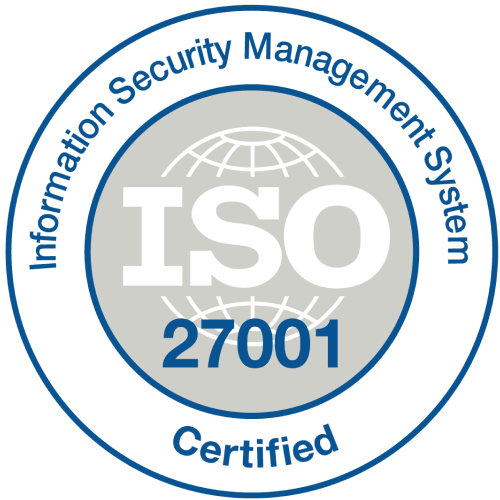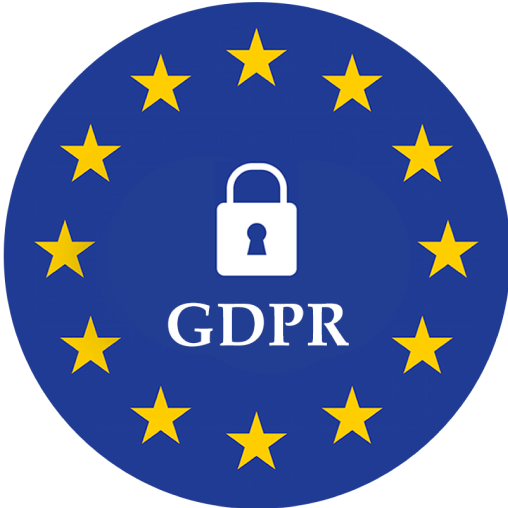
What is strategic human resource management?
Strategic Human Resource Management (Strategic HRM) is the intentional alignment of human resource policies and practices with the long-term goals of an organization. It moves beyond the administrative side of the hr department to become a proactive force in shaping the future of the business. Instead of merely managing hiring, payroll, or compliance, strategic HRM focuses on leveraging people as assets to gain a competitive edge.
At its core, strategic human resource management is about making informed decisions that support both employee relations and business performance. It considers how HR functions—like recruitment, learning and development, performance management, and succession planning—can be structured to contribute directly to strategic goals. Whether it's scaling talent for growth or building resilience during change, strategic HRM ensures the people strategy is as forward-thinking as the business strategy.
The strategic human resource management definition includes planning for workforce needs, assessing future skill gaps, aligning incentives with training programs and business objectives, and cultivating a work culture that supports agility and innovation. This kind of HR strategic management requires close collaboration between HR leaders and other departments, reinforcing the idea that people decisions are business decisions.
Ultimately, a strategic approach to human resources is not just support functions—they’re central to shaping where the business is headed. When applied effectively, strategic HRM turns HR into a guiding partner in organizational growth and transformation, not just a process executor.
Key takeaways from the blog
- Strategic HRM aligns human resource practices with business goals, driving long-term growth and competitive advantage.
- Embracing technology and HR analytics enhances decision-making and workforce planning in evolving work environments.
- Effective strategic HRM requires clear goals, regular plan updates, and skilled HR leaders to navigate today’s dynamic workplace.
Importance of strategic human resource management
Strategic human resource management is more than a support function—it’s a core business driver. When HR practices are tied to strategic objectives, companies build a workforce that’s agile and engaged, ready for the business environment of the future. Here are the top reasons why it’s essential:
1. Ensures HR efforts are aligned with long-term business objectives
Strategic HRM creates a direct connection between people practices and organizational goals. Whether a company is aiming to expand into new markets or adopt emerging technologies, an hr professional plays a central role in making that happen by aligning talent with business direction.
2. Enables proactive workforce planning and talent forecasting
Rather than reacting to talent gaps, strategic HR managers anticipate them. With workforce analytics and strategic planning, the human resource department leaders can prepare for retirements, emerging skill needs, or changes in workforce structure well in advance.
3. Improves employee engagement and individual performance
When HR strategies are clear and forward-looking, employee retention improves as employees better understand their role in the company’s growth. This clarity, paired with structured performance goals and learning paths, leads to higher motivation and output.
4. Helps organizations stay adaptable in changing environments
Strategic human resources support resilience by building systems that respond to change. Whether dealing with a shifting economy or technological advancements in a remote workforce transition, companies with strategic HRM models can pivot without losing momentum.
5. Supports data-driven HR decisions that reduce guesswork
HR strategic management involves the use of data to track, measure, and optimize workforce-related decisions. From turnover trends to learning ROI, strategic HRM empowers leaders to act based on insights that lead to organizational success rather than intuition.
6. Strengthens employer branding and reduces turnover
A clear, consistent people strategy shows current and prospective employees that the company is serious about growth and development. Strategic HRM initiatives—like hr policies, leadership tracks, or culture-building programs—can improve retention and attract quality talent.
7. Contributes to long-term organizational growth and innovation
Strategic human resource management goes beyond routine HR tasks to build capabilities that scale. It focuses on developing strategies for leadership pipelines, innovation-ready teams, and a culture that supports long-term progress and adaptability.
What are strategic HR management goals?
Strategic HR management goals serve as the foundation for aligning human capital with long-term business direction. These goals aren’t just about hiring or training—they're about shaping a workforce that aligns with the broader business strategy and actively drives organizational performance. Below are five key goals that define strategic human resource management.
1. Building a future-ready workforce
One of the top goals of strategic HRM is to ensure the organization is equipped with the right skills for tomorrow. This includes identifying future skill gaps and aligning them with a human resource management strategy, investing in continuous learning, and preparing employees to adapt to evolving roles and technologies.
2. Aligning employee performance with business outcomes
Strategic human resource management focuses on setting clear performance expectations that tie directly to company objectives. Through performance tracking, feedback loops, and recognition systems, the strategic hr planning process ensures that employees are not just busy but impactful.
3. Enhancing employee engagement and retention
Creating an environment where employees feel valued, supported, and connected is a major strategic HR goal. This includes fostering open communication, investing in well-being, and offering growth opportunities that lead to better business performance, reduce turnover, and boost morale.
4. Supporting leadership development and succession planning
Strategic HR leaders prioritize the development of internal talent for future leadership roles. This involves identifying high-potential employees, mentoring them in their career development, and establishing succession plans to ensure continuity and stability.
5. Driving organizational culture and values
Strategic human resources work to embed company values into daily operations. Whether it’s through onboarding, performance metrics, talent management processes or leadership behavior, HR aims to create a cohesive culture that supports both employee satisfaction and business success.
Strategic human resources management benefits
Strategic human resource management brings measurable value beyond traditional HR practices. It turns the HR function into a key player in business success by integrating workforce planning with strategy to create a positive work environment. Here are the top benefits of strategic HRM that haven’t been covered earlier:
- Improves cross-functional collaboration: Strategic HRM encourages coordination between HR and other departments like finance, marketing, and operations. This leads to better alignment of managing human resources plans with business initiatives, enabling smoother project execution and stronger teamwork.
- Reduces costs through better workforce utilization: By analyzing workforce data and anticipating needs, strategic HR managers can reduce overstaffing, overtime expenses, and high recruitment costs. Smarter deployment of human capital leads to increased efficiency and better ROI.
- Supports diversity, equity, and inclusion efforts: Strategic human resources places a stronger emphasis on building diverse and inclusive teams that reflect a wide range of perspectives. These efforts not only improve innovation but also strengthen the company's reputation and employee trust.
- Enhances adaptability during organizational restructuring: When companies go through mergers, downsizing, or role redesigns, strategic HRM ensures smoother transitions. With clear plans and communication frameworks, the human impact of change can be better managed and minimized.
- Facilitates compliance with changing labor regulations: Strategic HR management involves staying ahead of legal trends and ensuring the company is always up to date with local and global employment laws. This reduces the risk of penalties and reputational damage.
- Encourages innovation through employee empowerment: Strategic human resource practices foster an environment where employees are encouraged to share ideas, experiment, and take initiative. This creates a culture of innovation that can lead to competitive advantages in any industry.
Traditional HRM vs strategic HRM
While both traditional HRM and strategic HRM focus on managing people, their approach and impact differ significantly. Traditional HRM is more operational and reactive, whereas strategic HRM takes a proactive, long-term view aligned with business strategy. Here’s a comparison of the two across key dimensions:
7 Steps to creating a strategic human resource management plan
Creating a strategic human resource management plan helps ensure your people strategy grows alongside your business goals. It's not just about hiring—it's about building a workforce that drives long-term success. Here are seven essential steps to build a solid strategic HRM framework:
1. Understand the organization’s vision and goals
Start by aligning with leadership to understand the company’s mission, long-term objectives, and growth plans. Strategic HRM begins by translating these into workforce needs, like future skill sets, team structures, or leadership roles.
2. Conduct a comprehensive workforce analysis
Evaluate your current talent landscape. This includes assessing skills, roles, gaps, demographics, performance data, and turnover trends. A clear picture of your existing workforce helps you plan effectively for the future.
3. Forecast future HR needs and challenges
Based on business goals and workforce analysis, predict the talent you’ll need in the next 1–5 years. Consider new positions, technology integrations, potential retirements, and external factors that may affect hiring or reskilling.
4. Define HR practices and strategies
Set specific, measurable HR goals that align with your business strategy. These might include leadership development, diversity hiring, internal mobility, or enhancing employee experience through digital tools.
5. Develop action plans and assign accountability
Outline clear initiatives to achieve each HR objective, such as launching mentorship programs or rolling out a new HRIS system. Assign responsibility to HR leaders, set timelines, and define success metrics.
6. Communicate the plan across the organization
Strategic human resource plans must be shared with leadership, managers, and employees. Communicate how the strategy supports their roles, the company’s future, and how progress will be tracked.
7. Monitor, measure, and adjust the plan regularly
A strategic HRM plan isn’t static. Use HR analytics and feedback loops to evaluate effectiveness, spot gaps, and adapt to shifting business needs or labor market changes. Continuous improvement keeps your HR strategy relevant and results-driven.
Strategic HRM in remote and hybrid work environments
Remote and hybrid work have transformed the way HR teams approach workforce planning and management. Strategic HRM now plays a critical role in sustaining productivity, culture, and engagement across dispersed teams. Here’s how it adapts to modern work models:
- Redefining performance metrics for remote productivity: Traditional measures like physical presence or hours logged don’t apply in remote setups. Strategic human resource managers focus on outcome-based performance tracking, using clear KPIs, goal-setting frameworks, and regular check-ins to ensure accountability and results.
- Strengthening digital communication and collaboration: Remote and hybrid environments rely on seamless communication. Strategic human resources invest in digital collaboration tools, virtual team-building efforts, and clear communication protocols to keep employees connected and aligned.
- Adapting employee engagement strategies: Without face-to-face interaction, strategic HRM must work harder to maintain morale. This includes pulse surveys, virtual recognition programs, flexible policies, and consistent engagement initiatives tailored to both remote and hybrid team members.
- Creating inclusive and equitable hybrid work policies: Strategic HR leaders ensure that policies are fair across remote and in-office workers. Whether it’s access to growth opportunities or visibility during performance reviews, equity remains a key focus of any effective strategic human resource management model.
- Supporting manager development for distributed teams: Managing hybrid or remote teams requires new skills. Strategic HRM prioritizes manager enablement by offering training in virtual leadership, digital feedback delivery, and emotional intelligence, equipping them to lead effectively across locations.
Strategic human resource management examples
Strategic human resource management comes to life when HR practices are purposefully aligned with long-term business goals. These examples show how companies use HR as a strategic force to boost performance, growth, and adaptability:
1. Talent pipeline development at a tech startup
A fast-growing SaaS company forecasts its expansion and invests early in campus hiring, internships, and reskilling programs. By nurturing future talent internally, HR ensures that as the business scales, leadership and specialized roles are filled without external delays.
2. Data-driven decision-making in retail HR
A large retail chain uses HR analytics to predict seasonal turnover and optimize staffing levels. By adjusting hiring plans in advance and identifying high-performing store managers, HR supports business efficiency and improves customer service during peak times.
3. Diversity and inclusion strategy in a global enterprise
An international firm creates a multi-year DEI strategy linked to its brand and customer base. Strategic HR managers build diverse hiring panels, launch inclusive leadership training, and tie executive bonuses to measurable inclusion metrics.
4. Strategic upskilling at a manufacturing company
Facing automation trends, a manufacturing company collaborates with HR to reskill workers into maintenance and tech-monitoring roles. This proactive move helps retain loyal employees while aligning with digital transformation goals.
5. Hybrid work restructuring in a consulting firm
Post-pandemic, a consulting firm implements a structured hybrid work policy. Strategic HR teams map roles suited for remote work, invest in virtual collaboration tools, and redesign performance evaluations to reflect output, not hours logged.
Technology tools that power strategic HR functions
Technology has become a backbone for strategic human resource management, enabling HR teams to operate more efficiently and make smarter decisions. These tools help align HR activities with broader business goals while improving employee experience and data accuracy.
- Human resource information systems (HRIS): HRIS platforms centralize employee data, payroll, benefits, and compliance tracking. By providing real-time access to workforce information, these systems support strategic planning and help HR managers make data-driven decisions.
- Talent management systems (TMS): TMS software streamlines recruitment, onboarding, performance management, and learning & development. These integrated platforms help strategic HR teams identify skill gaps, nurture talent pipelines, and align employee growth with business objectives.
- Workforce analytics and reporting tools: Advanced analytics tools enable HR to analyze trends like turnover rates, engagement scores, and productivity metrics. This data guides strategic workforce planning and helps anticipate future talent needs.
- Collaboration and communication platforms: Tools such as Slack, Microsoft Teams, or Zoom foster better communication, especially in remote or hybrid settings. Strategic human resource management uses these platforms to enhance engagement, knowledge sharing, and team cohesion.
- Employee engagement and feedback apps: Platforms like CultureAmp or Qualtrics collect continuous employee feedback through surveys and pulse checks. This ongoing data helps HR quickly respond to morale issues and refine engagement strategies.
- Learning management systems (LMS): LMS tools provide scalable training and development programs. Strategic HR managers use LMS platforms to deliver targeted learning paths that support upskilling and career progression aligned with organizational goals.
Role of HR analytics in strategic decision-making
HR analytics has become a critical component of strategic human resource management by turning workforce data into actionable insights. It helps HR leaders and strategic HR managers make informed decisions that directly impact business outcomes.
- Identifying talent gaps and forecasting needs: HR analytics analyzes current skills and workforce demographics to predict future talent shortages or surpluses. This enables proactive recruitment, training, and succession planning aligned with the company’s strategic goals.
- Improving employee performance and productivity: By tracking performance data and employee engagement metrics, HR analytics helps identify high performers and areas where employees may need support or development. This targeted approach enhances overall productivity and supports strategic talent management.
- Reducing employee turnover and retention risks: Analyzing turnover trends, exit interviews, and employee feedback, HR analytics uncovers reasons behind attrition. Strategic HR managers can then design retention strategies to keep key talent and reduce costly turnover.
- Enhancing diversity and inclusion efforts: HR analytics provides insights into workforce composition and recruitment pipelines. This data helps track progress on diversity goals and ensures equitable hiring and promotion practices, which are often key components of strategic human resources plans.
- Optimizing workforce costs: With detailed cost and compensation analytics, HR leaders can align pay structures, benefits, and staffing levels with budget constraints and strategic priorities, ensuring efficient resource allocation.
FAQs
1. Can small businesses benefit from strategic HRM principles?
Yes, small businesses can greatly benefit from strategic HRM principles. Even with limited resources, aligning HR practices with business goals improves hiring quality, employee engagement, and retention. Strategic HRM helps small businesses anticipate workforce needs, develop talent, and stay competitive, creating a foundation for sustainable growth and agility in changing markets.
2. What skills do HR leaders need for strategic HRM?
HR leaders need strong analytical skills, business acumen, and the ability to align HR with organizational strategy. Effective communication, change management, and data-driven decision-making are crucial. Strategic HR managers must also be adaptable and skilled in workforce planning, talent development, and collaboration to drive long-term business success.
3. How does strategic HRM differ from traditional HRM?
Strategic HRM focuses on aligning HR activities with the organization’s long-term goals, taking a proactive and integrated approach. It influences overall business strategy and helps drive growth. Traditional HRM, in contrast, is more administrative and reactive, dealing mainly with hiring, payroll, and compliance, without a direct role in shaping company direction.
4. How often should a strategic HR plan be reviewed or updated?
A strategic HR plan should be reviewed at least once a year to keep pace with evolving business objectives and workforce changes. It also needs updates during significant events like mergers, technological shifts, or market disruptions. Regular reviews ensure that HR initiatives remain relevant and effectively support the company’s strategic priorities.
5. How do HR analytics support strategic HRM?
HR analytics turns employee data into actionable insights that guide strategic decisions. It helps forecast talent needs, identify skill gaps, improve retention rates, and optimize workforce costs. By providing evidence-based analysis, HR analytics empowers strategic HR managers to align their workforce strategies with overall business goals and improve organizational performance.
Empower, Engage & Succeed with the Complete Employee Engagement Software
DISCOVER NOWGet breaking news and curated stories delivered to your inbox every day. Be the first to know what’s happening around the world



.svg)















.png)

